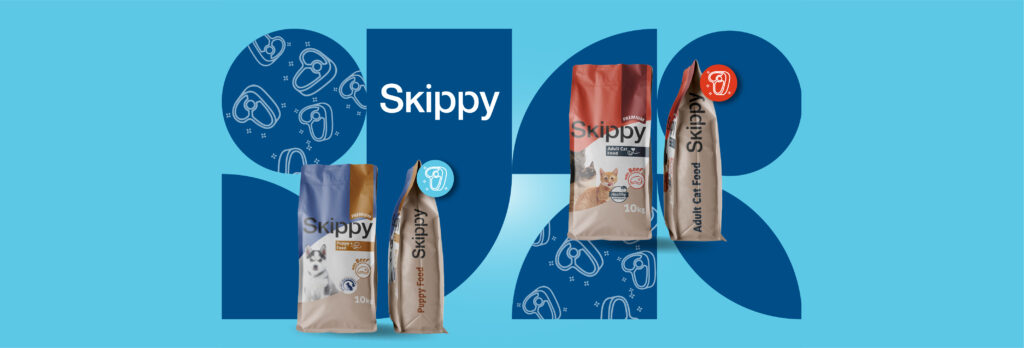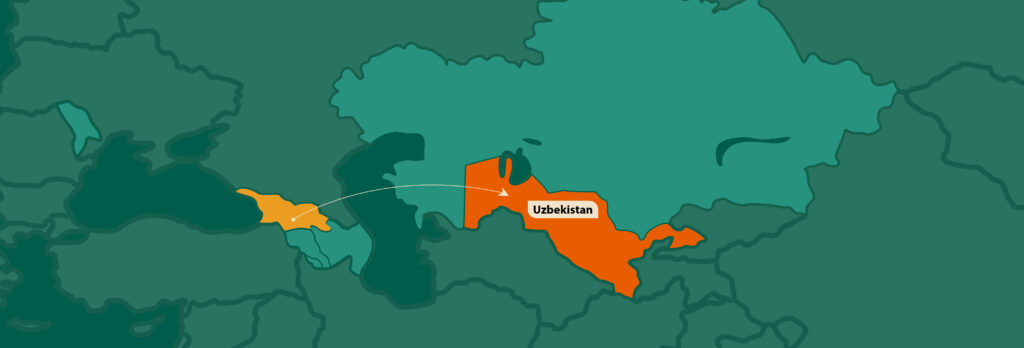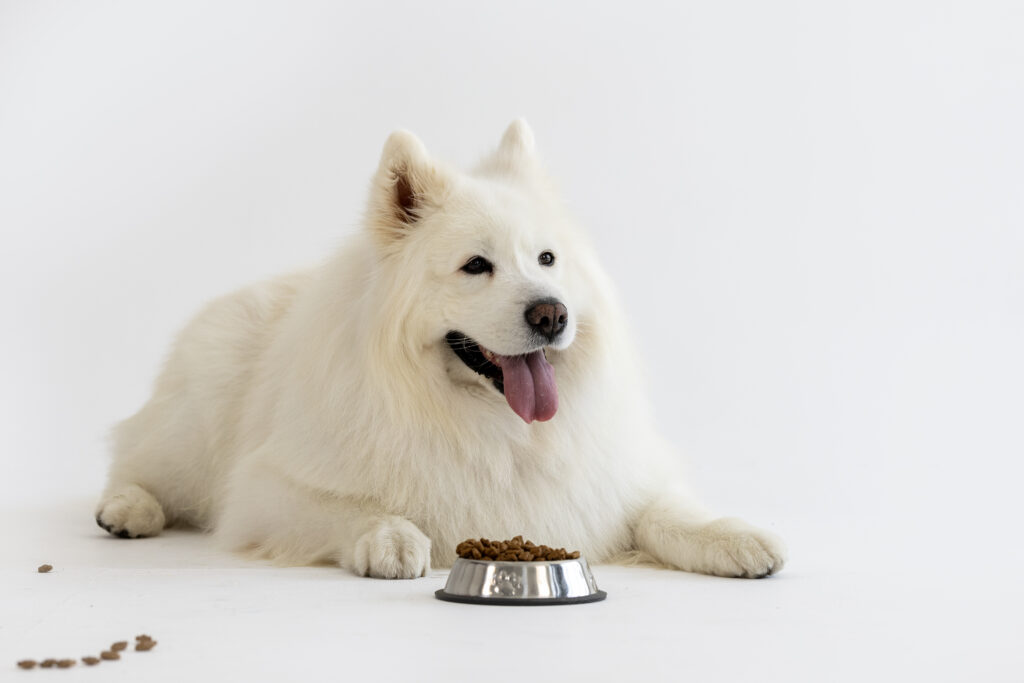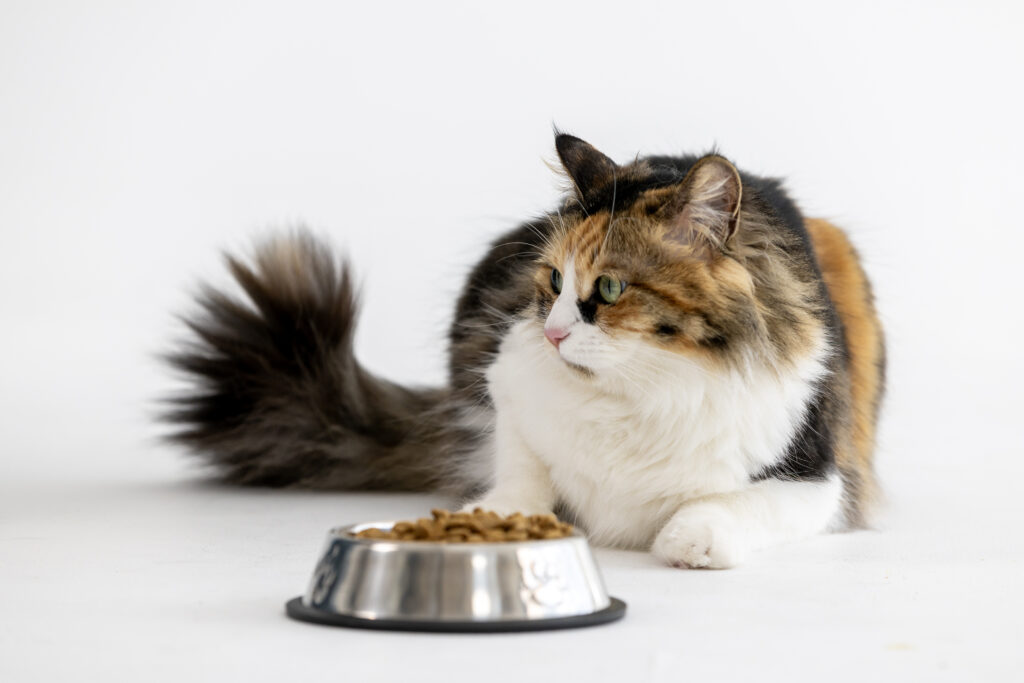To make informed decisions regarding companion animals’ nutrition, we must rely only on trusted sources, including the opinions of veterinarians and pet nutrition specialists.
Avoiding misinformation and understanding the truth behind common myths will help us make choices that significantly improve our four-legged friends’ quality of life.
With this goal in mind, this article addresses the most frequently asked questions and covers the main topics of public interest. Whether you’re an experienced pet parent or enjoying the joy of having a dog for the first time, we’re here to help you take the best care of your furry friend.
Dry or Wet Food? Which Type Is Better for Dogs?
To determine which type of food is best for your dog, it’s advisable to consult a veterinary nutritionist before choosing a formula that adequately meets your pet’s nutritional needs.
Before visiting a specialist, let’s explore the advantages of dry and wet food.
What Are the Benefits of Dry Food?
Due to its convenience and long shelf life, dry food is a popular choice for pet parents. High-quality dry food is formulated with the proper balance of essential nutrients. Premium dry food formulas are complete and balanced.
The crunchy texture of kibble reduces plaque buildup and promotes dental health. Compared to wet food, dry food is easier to portion out in advance. If you decide to leave food in the bowl, you won’t have to worry about it spoiling before you return home. Dry food also creates a longer-lasting feeling of fullness, which is important for weight control—especially in pets with a hearty appetite.
Dry food is generally more affordable than wet food and can be purchased in smaller, portioned amounts. Unlike wet food, it doesn’t require refrigeration after opening. It’s also easier to incorporate into puzzle toys and slow feeders, enhancing your dog’s quality of life through cognitive stimulation.
What Are the Benefits of Wet Food?
Proper hydration is essential for a dog’s overall health, including digestion, kidney function, and temperature regulation. However, some dogs naturally have a low thirst drive, which can increase the risk of dehydration, urinary tract infections, and kidney problems.
In such cases, feeding wet food can be a practical solution. Wet food provides hydration even if the dog is reluctant to drink from a water bowl. Additionally, its soft texture may be more appealing to older dogs or those with dental issues.
How Often Should a Dog Eat?
Among many questions from both new and experienced pet parents, one of the most important is how frequently a dog should be fed. While there’s no strict rule, the most common recommendation is two meals a day.
Dogs have a simple stomach anatomy. After eating, the stomach empties into the small intestine within a few hours. About 8–10 hours after a meal, the empty stomach sends signals to the brain, triggering a hunger response. This is why feeding at least twice a day is ideal for your dog.
Disruptions to a regular feeding schedule can sometimes signal an underlying illness. When pets are fed at the same time daily, they develop a consistent routine. If your dog suddenly stops eating or leaves food in the bowl, it’s a sign to schedule a veterinary visit.
Dogs with medical conditions or special dietary needs may require a customized feeding schedule. Talk to a professional to ensure your dog’s nutritional needs are fully met.
Always check the recommended portion size on the food packaging and adjust based on your dog’s individual requirements. With a consistent feeding routine and well-adjusted portions, you’ll help your dog enjoy a better quality of life and live as long as possible.
Which Foods Should Be Avoided?
Certain foods can be toxic to dogs—even in small amounts. To prevent unpleasant experiences, here’s a list of foods you should avoid giving your dog.
Being cautious during feeding and keeping harmful foods out of reach is essential. However, if your dog still manages to consume something toxic, contact your veterinarian immediately. Food poisoning may show up as vomiting, diarrhea, tremors, seizures, breathing difficulties, or excessive drooling.
Fruits and Vegetables
- Grapes and raisins – May cause kidney failure.
- Onions, garlic, leeks – Can damage red blood cells and cause anemia.
- Avocado – Contains persin, toxic to dogs.
- Cherry pits, stems, and leaves – Contain cyanide, toxic to dogs.
- Unripe tomatoes and their stems/leaves – Contain solanine, harmful to the digestive system.
- Wild/toxic mushrooms – May cause severe poisoning.
Beverages and Dairy Products
- Grapes and raisins – May cause kidney failure.
- Onions, garlic, leeks – Can damage red blood cells and cause anemia.
- Avocado – Contains persin, toxic to dogs.
- Cherry pits, stems, and leaves – Contain cyanide, toxic to dogs.
- Unripe tomatoes and their stems/leaves – Contain solanine, harmful to the digestive system.
- Wild/toxic mushrooms – May cause severe poisoning.
Processed Foods
- Xylitol (found in candy and baked goods) – Extremely toxic; may cause liver failure and hypoglycemia.
- Chocolate (especially dark and baking chocolate) – Contains theobromine, toxic to dogs.
- Salty snacks (chips, pretzels, popcorn) – Excessive salt intake can lead to sodium poisoning.
- Raw dough (with yeast) – May expand in the stomach, causing bloating.
Nuts
- Macadamia nuts – Can cause weakness, vomiting, tremors, and fever.
- Walnuts and pecans – May contain mold that produces harmful toxins.
- Raw cashews and almonds – Difficult to digest and may cause choking.
- Nutmeg – Contains myristicin, toxic to dogs.
Meat, Bones, and Seafood
- Raw or undercooked meat and eggs – May contain harmful bacteria like Salmonella or E. coli.
- Cooked bones (chicken, pork, beef) – Can cause internal injuries.
- Fatty meats (like bacon) – May lead to pancreatitis.
Myths and Misconceptions About Dog Nutrition
There are many misconceptions about feeding dogs. Understanding the truth behind these myths can help ensure a long and happy life for your dog.
Pets don’t have a strong sense of taste, so it doesn’t matter what we feed them.
A dog’s tongue, mouth, and throat contain tiny bumps called taste buds. These taste buds include around 1,700 receptors focused on taste perception. While this number is significantly lower than the 9,000 taste receptors in the human mouth, it does not mean that dogs cannot perceive taste. Our four-legged friends can distinguish between sweet, sour, salty, and bitter flavors quite well.
It’s also important to note that taste is not perceived solely through taste receptors. The sense of smell plays a significant role in taste perception. The olfactory receptors located in a dog’s nasal cavity contribute greatly to their sense of taste. According to scientists, about 75% of taste perception is influenced by the sense of smell.
Raw meat is the best food for dogs.
The best and most balanced diet for a dog is achieved through the right combination of proteins, fats, carbohydrates, vitamins, and minerals. Despite this, many people believe that because dogs are descendants of wolves, raw meat should be a fundamental part of their diet. While our canine companions do share some genetic similarities with wolves, they have been living alongside humans for thousands of years, and their nutritional needs have evolved accordingly. Today, dogs can digest a variety of foods, including fruits, grains, and vegetables, without any issues.
It is also important to note that raw, unprocessed meat often contains harmful bacteria such as Salmonella and E. coli, which can be dangerous for companion animals. Unfortunately, the risk of these bacteria being transmitted from dog to human is high. To be safe, always cook lean meats thoroughly before offering them to your pet.
It’s acceptable to feed dogs table scraps.
Feeding dogs leftovers is a common practice in many households, but the belief that this is a safe and acceptable feeding method is a myth. While dogs may happily consume leftovers, human food is not always suitable for their dietary needs and may lead to serious health issues.
The dishes we enjoy often contain sugar, salt, or spices, all of which can cause serious problems for a dog’s digestive system.
Bones, especially cooked ones, present another hidden danger. Although it is a widely held belief that feeding dogs bones is natural, cooked bones can splinter easily and may cause choking, internal injuries, or blockages in the digestive tract.







